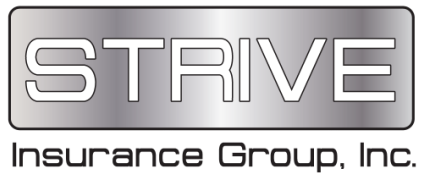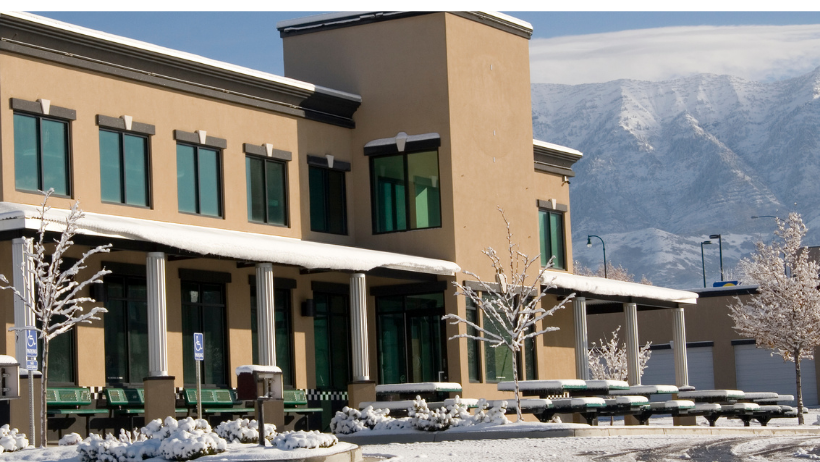|
Commercial property insurance is a vital safeguard for businesses of all sizes. Whether you own a small retail store or a large industrial complex, protecting your assets from unforeseen events is essential. Commercial property insurance provides coverage for damages or losses to your business property, including buildings, inventory, equipment, and more. To ensure you have the right coverage, here are five keys to understanding and obtaining commercial property insurance:
Assess Your Property and Its Value Before you can secure the right insurance policy, you need to thoroughly assess your property and its value. This step involves taking an inventory of your business assets, such as buildings, machinery, office equipment, inventory, and even outdoor signs. Make a detailed list of everything you want to insure, including their estimated value. Having a clear understanding of the value of your property will help you determine the appropriate coverage limits. Consider working with a professional appraiser or your insurance provider to get an accurate assessment. Understand Coverage Types Commercial property insurance typically comes in two primary forms: named peril and open peril (also known as all-risk) coverage. Named peril policies provide coverage for specific perils, like fire, theft, or vandalism, which are explicitly mentioned in the policy. Open peril policies, on the other hand, cover a broader range of risks, except for those explicitly excluded. Most businesses opt for open peril policies as they provide broader protection, but they may come at a higher premium. Understanding the coverage type is crucial, as it determines what events are covered and which are not. Consider Additional Coverages In addition to basic property coverage, there are several additional coverages you should consider to enhance your protection. These may include: Business interruption insurance: This coverage can help replace lost income and cover expenses when your business operations are interrupted due to a covered peril. Equipment breakdown insurance: This covers the cost of repairing or replacing equipment and machinery that breakdown due to a sudden and accidental mechanical or electrical failure. Flood insurance: Standard property insurance typically doesn't cover damage caused by floods, so if your business is located in a flood-prone area, it's essential to purchase separate flood insurance. Earthquake insurance: Similar to flood insurance, this coverage is necessary if you're in an earthquake-prone region. Review your specific business needs and location to determine which additional coverages are necessary for your property insurance policy. Policy Deductibles and Premiums Commercial property insurance policies often come with deductibles and premiums. The deductible is the amount you agree to pay out of pocket before your insurance coverage kicks in. Higher deductibles can lower your premium costs, but it's essential to balance this with your ability to cover the deductible in case of a loss. Premiums are the ongoing payments you make for your insurance coverage. When determining your premium, insurance companies consider various factors, including the type of property, location, security measures, and the coverage limits. Be sure to get quotes from multiple insurers to find the best balance of coverage and cost for your specific needs. Review and Update Your Policy Regularly Once you have commercial property insurance in place, don't forget to regularly review and update your policy. As your business grows and changes, so do your insurance needs. Any significant renovations, property acquisitions, or changes in your business operations should be promptly reported to your insurance provider. Failing to keep your policy up to date can result in coverage gaps or insufficient protection. It's also wise to annually review your policy to ensure it still meets your business requirements and is priced competitively. Commercial property insurance is a vital component of your business risk management strategy. Understanding the keys to obtaining the right coverage—assessing your property and its value, understanding coverage types, considering additional coverages, managing deductibles and premiums, and reviewing and updating your policy—will help ensure your business is adequately protected in the event of unexpected disasters or accidents. Work closely with your insurance provider to customize a policy that meets your specific needs, and don't hesitate to seek professional guidance when necessary. Protecting your commercial property is an investment that can save your business from financial hardship in the long run. Medical Buildings
Managing property risks in a medical building is crucial to ensure the safety of patients, staff, and valuable assets, while also safeguarding the reputation and financial stability of the healthcare facility. Medical buildings are unique in that they house sensitive equipment, handle patient care, and must adhere to strict regulations. Robust Maintenance Protocols Regular and thorough maintenance is the foundation of managing property risks in a medical building. Establishing and adhering to a robust maintenance protocol not only prevents equipment breakdowns but also addresses potential hazards before they escalate. Here are key aspects to consider:
Maintaining a secure medical building is vital to safeguard sensitive patient information, expensive medical equipment, and the well-being of individuals within the facility. Robust security measures can significantly mitigate risks. Consider the following strategies:
Despite thorough maintenance and security measures, certain risks are unpredictable and can lead to financial liabilities. Property insurance plays a crucial role in mitigating these risks. Here's how to approach insurance and risk transfer:
Top of Form Property management is a dynamic and lucrative industry that involves the management, maintenance, and leasing of real estate properties on behalf of owners. Whether you're overseeing residential complexes, commercial spaces, or mixed-use properties, the success of your property management business heavily depends on consistent cash flow. Unexpected disruptions, such as natural disasters, accidents, or other unforeseen events, can significantly impact your income stream. This is where business income insurance for property managers comes into play as an essential risk management tool.
Understanding Business Income Insurance: Business income insurance, often referred to as business interruption insurance, is a type of coverage that safeguards your business against financial losses stemming from interruptions caused by covered perils. For property managers, this coverage extends to the income loss resulting from unforeseen events that temporarily halt your ability to generate rental revenue. Key Benefits for Property Managers
Choosing the Right Coverage When considering business income insurance for your property management business, it's important to thoroughly assess your needs and risks. Here are a few steps to help you choose the right coverage:
Medical offices play a critical role in providing essential healthcare services to communities. In the pursuit of delivering quality patient care, medical practitioners and staff face various challenges and risks that can impact their operations and financial stability. Commercial insurance for medical offices is a vital component of managing these risks and ensuring the smooth functioning of the healthcare facility. In this article, we will explore the three key factors that medical office administrators should consider when selecting commercial insurance coverage.
1. Comprehensive Liability Coverage Liability is a significant concern for medical offices due to the inherent risks associated with healthcare services. Comprehensive liability coverage should be a top priority for medical office insurance plans. This coverage encompasses both general liability and professional liability (malpractice) insurance. General Liability Insurance: This coverage protects medical offices from claims related to bodily injury, property damage, and other non-medical incidents that can occur on the premises. For instance, if a patient or visitor slips and falls in the waiting room, general liability insurance can cover medical expenses and potential legal costs. Professional Liability Insurance: Also known as malpractice insurance, this coverage is specific to healthcare professionals. It safeguards medical practitioners from claims arising due to errors, omissions, or negligence in providing medical care. Given the potential financial implications of malpractice lawsuits, this coverage is indispensable for medical offices. 2. Property Insurance Medical offices are equipped with valuable medical equipment, technology, and infrastructure. In the event of unexpected events such as fire, theft, vandalism, or natural disasters, property insurance becomes essential to safeguard these assets. Building Coverage: Medical offices should have insurance coverage that protects the physical structure of the facility. This includes coverage for damage to walls, ceilings, floors, and other structural elements resulting from covered perils. Contents Coverage: Medical equipment, furniture, computers, and other valuable items within the facility should be covered under contents insurance. In the event of theft or damage, this coverage ensures that the medical office can replace or repair essential items without significant financial strain. Business Interruption Coverage: If a covered event forces the medical office to suspend operations temporarily, business interruption coverage can provide compensation for lost income and ongoing expenses during the period of closure. This coverage helps medical offices recover more swiftly after an unforeseen disruption. 3. Cyber Liability Insurance In the digital age, medical offices rely heavily on electronic health records (EHR) systems and sensitive patient data storage. This increased reliance on technology exposes medical offices to cyber risks such as data breaches, hacking, and ransomware attacks. Cyber liability insurance is designed to protect against financial losses and legal liabilities resulting from cyber incidents. Data Breach Coverage: If patient data is compromised due to a cyberattack, data breach coverage can help cover the costs of notifying affected individuals, credit monitoring services, legal fees, and regulatory fines. Ransomware Protection: Cyber liability insurance can also provide coverage in the unfortunate event of a ransomware attack. It can cover the costs associated with ransom payment, data recovery, and any necessary system repairs. Legal and Regulatory Support: Cyber liability insurance often includes access to legal and technical experts who can help medical offices navigate the legal and regulatory landscape after a cyber incident. Commercial insurance is an essential safeguard for medical offices to mitigate risks and ensure continuity of operations. Comprehensive liability coverage, property insurance, and cyber liability insurance are three fundamental keys to creating a robust insurance strategy for medical offices. By addressing these key areas, medical office administrators can provide quality care to patients while protecting their practice from potential financial hardships stemming from unforeseen events. Top of Form It may be that time of the year when your home insurance policy is up for renewal. We would like to guide you through the process of preparing for your home insurance renewal, ensuring that your coverage continues to provide you with the peace of mind you deserve. Home insurance is a vital aspect of protecting your most significant investment, and keeping it up to date is crucial for your peace of mind.
1. Review Your Current Policy: Before diving into the renewal process, take a moment to review your current home insurance policy. Understand what is covered, the policy limits, and any exclusions. Make a list of questions or concerns you may have. This step will help you make informed decisions when discussing your renewal. 2. Assess Your Home's Value: The value of your home may have changed since your last renewal. Major home improvements, renovations, or changes in the local real estate market can impact the replacement cost of your home. Inform your insurance agent about these changes to ensure your coverage accurately reflects the current value of your property. 3. Update Your Personal Information: Ensure your contact information is up to date. Accurate contact details are essential for smooth communication, especially in the event of a claim. Keep your agent informed of any changes in your phone number, email, or mailing address. 4. Consider Bundling: Many insurance companies offer discounts when you bundle your home and auto insurance policies. Bundling can lead to significant savings, so it's worth exploring this option if you haven't already. 5. Assess Your Deductible: Your deductible is the amount you must pay out of pocket before your insurance coverage kicks in. Consider your financial situation and risk tolerance when deciding on a deductible. A higher deductible can lead to lower premiums, while a lower deductible may result in higher premiums. 6. Discuss Policy Endorsements: If you've acquired valuable assets or made improvements to your home, consider adding policy endorsements (riders) to ensure they are adequately covered. Items like jewelry, fine art, or home office equipment may require additional coverage beyond your standard policy. 7. Evaluate Liability Coverage: Liability coverage protects you in case of lawsuits or claims against you. Assess your current liability limits to determine if they are sufficient to protect your assets and future earnings. If you need more protection, you can increase your liability coverage. 8. Stay Informed: Insurance regulations and industry standards can change over time. Staying informed about these changes will help you make informed decisions during the renewal process. Your home insurance renewal is an excellent opportunity to reassess your coverage needs and ensure you're adequately protected. Don't hesitate to reach out to your insurance agent with any questions or concerns regarding your renewal. They are there to guide you through the process and help you make the best choices for your unique circumstances. 8/10/2023 Our Top Ten Business RisksBusiness risks can vary depending on the industry, location, and specific circumstances of a company. However, there are some common business risks that many organizations face. We have always believed in education and putting you first. Some of these risks can be managed by insurance and other through risk management strategies, give us a call today.
 Commercial property managers have a crucial role in overseeing the operations and maintenance of various business properties. Their responsibilities encompass everything from tenant management to property upkeep. With so much at stake, it is imperative for commercial property managers to safeguard their investments through comprehensive insurance coverage. In this article, we will explore the significance of insurance for commercial property managers and how it helps protect their assets and mitigate potential risks. Property Insurance Commercial property insurance serves as the backbone of any risk management strategy for property managers. This type of insurance provides coverage for physical assets such as buildings, structures, and equipment against a range of perils, including fire, vandalism, theft, and natural disasters. It is essential for property managers to assess the value of their properties accurately and obtain adequate insurance coverage to protect against potential losses. Liability Insurance Liability insurance is another critical component of an insurance portfolio for commercial property managers. It protects against claims made by third parties for bodily injury, property damage, or personal injury that occurs on the property under management. With multiple tenants, employees, and visitors accessing the premises, the potential for accidents or incidents increases. Liability insurance provides financial protection and covers legal costs in the event of lawsuits, helping property managers handle unexpected claims without significant financial strain. Worker's Compensation Insurance Commercial property managers often employ staff to handle various tasks related to property maintenance, repairs, and security. In such cases, it is vital to have worker's compensation insurance to protect employees in the event of work-related injuries or illnesses. Worker's compensation coverage provides medical benefits, disability income, and rehabilitation support to employees who suffer job-related injuries, thereby reducing the legal and financial liabilities for property managers. Business Interruption Insurance Unforeseen events such as fires, floods, or natural disasters can disrupt business operations and cause financial losses for both property managers and tenants. Business interruption insurance helps mitigate these losses by providing coverage for lost rental income and additional expenses incurred during the period of restoration. This type of insurance ensures that property managers can continue to meet their financial obligations while repairing the property and getting it back to a functional state. Cyber Insurance In today's digital age, commercial property managers are increasingly reliant on technology to manage their operations efficiently. From tenant data to financial records, sensitive information is stored electronically, making them vulnerable to cyber threats such as data breaches, ransomware attacks, or identity theft. Cyber insurance offers protection against these risks by covering expenses related to data breaches, legal fees, and reputational damages. Having cyber insurance safeguards both the property manager's business and the confidential information of their tenants. Insurance is an indispensable tool for commercial property managers to protect their investments, mitigate risks, and ensure the smooth functioning of their properties. From property and liability insurance to worker's compensation and cyber insurance, a comprehensive insurance portfolio addresses various potential risks that property managers face in their day-to-day operations. By obtaining the right insurance coverage, property managers can secure their assets, provide a safe environment for tenants, and protect themselves from unexpected financial burdens. Prioritizing insurance is not just a smart business decision; it is a crucial step towards long-term success in the commercial property management industry. Strive Insurance Group, Inc. (formerly Gordon Lund Insurance Agency, Inc) is an independent insurance agency representing many insurance companies. This means that we quote with many different insurance companies to obtain the best rate and coverage for your insurance. We do this at no additional fee or service charge to you. Our insurance agency's reputation for representing the best insurance companies, providing excellent customer service and competitive pricing to our clients has been earned and proven for over 30 years. We take great pride in finding you the best coverage and backing it up with prompt personal service.  Commercial realtors play a pivotal role in the dynamic and ever-evolving world of real estate. They navigate complex transactions, negotiate deals, and provide valuable expertise to their clients. However, like any business, commercial real estate ventures come with their own set of risks and uncertainties. That's where insurance steps in, offering comprehensive coverage to protect commercial realtors from potential financial and legal pitfalls. In this article, we will explore the importance of insurance for commercial realtors and the key types of coverage they should consider. Professional Liability Insurance Also known as errors and omissions (E&O) insurance, professional liability insurance is essential for commercial realtors. It provides coverage against claims arising from errors, omissions, negligence, or failure to perform professional duties effectively. Given the high-stakes nature of commercial real estate transactions, even a minor mistake or miscommunication can lead to substantial financial losses for clients. Professional liability insurance safeguards commercial realtors against potential lawsuits, legal expenses, and damages resulting from such claims. General Liability Insurance General liability insurance is fundamental for any business, including commercial realtors. It protects against third-party claims for bodily injury, property damage, or personal injury that occur on your premises or as a result of your business operations. For instance, if a client or visitor slips and falls in your office, general liability insurance would cover the medical expenses and any resulting lawsuits. It provides peace of mind, allowing you to focus on your core business activities without worrying about unexpected accidents or mishaps. Property Insurance Commercial realtors typically handle valuable properties, whether it's their own office space or properties they are brokering. Property insurance covers the physical assets, including the building, office contents, furniture, equipment, and signage, against risks such as fire, theft, vandalism, or natural disasters. As commercial realtors often have a substantial investment in their office space, property insurance ensures that they can recover swiftly from any unforeseen events and continue operations seamlessly. Cyber Liability Insurance In today's digital age, commercial realtors heavily rely on technology and online platforms to manage their operations and store sensitive client data. Cyber liability insurance protects against data breaches, network security failures, and other cyber-related risks. A single security breach can expose confidential client information, leading to financial loss and reputational damage. Cyber liability insurance offers coverage for legal expenses, data recovery, notification costs, and potential liability arising from cyber incidents. Business Interruption Insurance Business interruption insurance is crucial for commercial realtors, providing coverage for income loss and additional expenses in the event of a covered peril that disrupts normal business operations. This could include situations such as a fire, flood, or other incidents that render your office space temporarily unusable. Business interruption insurance helps cover ongoing expenses like rent, payroll, and utilities during the restoration period, ensuring that your business can recover smoothly without suffering significant financial setbacks. Insurance plays a vital role in mitigating the risks and uncertainties faced by commercial realtors. The comprehensive coverage provided by various insurance types, including professional liability, general liability, property, cyber liability, and business interruption insurance, safeguards commercial realtors against potential financial and legal pitfalls. Strive Insurance Group, Inc. (formerly Gordon Lund Insurance Agency, Inc) is an independent insurance agency representing many insurance companies. This means that we quote with many different insurance companies to obtain the best rate and coverage for your insurance. We do this at no additional fee or service charge to you. Our insurance agency's reputation for representing the best insurance companies, providing excellent customer service and competitive pricing to our clients has been earned and proven for over 30 years. We take great pride in finding you the best coverage and backing it up with prompt personal service. Medical offices play a vital role in delivering healthcare services to patients, but they also face various risks that can impact their operations, patient safety, and overall success. Recognizing and effectively managing these risks is crucial for maintaining a safe and efficient environment for both healthcare providers and patients.
6/13/2023 Medical Office Property Insurance Operating a medical office requires careful consideration of various risks that can impact both the property itself and the overall business operations. From regulatory compliance to patient safety, medical offices face unique challenges that demand proactive measures to minimize potential risks. This article delves into the property risks associated with a medical office and offers insights on how to effectively manage them. Regulatory Compliance: One of the foremost concerns for a medical office is ensuring compliance with the ever-evolving healthcare regulations. Failure to adhere to guidelines set by governmental bodies, such as HIPAA (Health Insurance Portability and Accountability Act) and OSHA (Occupational Safety and Health Administration), can result in severe penalties and legal consequences. Non-compliance risks pose threats to the reputation, operational continuity, and financial stability of the medical office. Mitigation Strategies: a) Stay updated with regulations: Regularly monitor changes in healthcare regulations to ensure compliance and avoid costly violations. b) Train staff: Educate all employees about regulatory requirements, including privacy laws and workplace safety protocols. c) Document policies and procedures: Maintain thorough documentation of policies and procedures to demonstrate compliance efforts. Infection Control and Biohazard Management: Given the nature of healthcare facilities, preventing the spread of infections and managing biohazardous materials are critical priorities. Failure to establish robust infection control practices can endanger patient health, compromise staff safety, and tarnish the reputation of the medical office. Mitigation Strategies: a) Implement rigorous hygiene protocols: Establish strict hand hygiene, sanitation, and sterilization procedures throughout the facility. b) Train staff on infection control: Conduct regular training sessions to educate staff on best practices for preventing the spread of infections. c) Proper waste disposal: Adhere to guidelines for the safe disposal of medical waste, including sharps, pharmaceuticals, and biohazardous materials. Structural and Equipment Risks: A medical office's infrastructure and equipment play a pivotal role in maintaining a safe and functional environment. Structural vulnerabilities, faulty equipment, and utility failures can disrupt operations, compromise patient care, and pose safety risks. Mitigation Strategies: a) Regular maintenance and inspections: Develop a preventive maintenance schedule for equipment and conduct routine inspections of the facility's infrastructure. b) Emergency preparedness: Create contingency plans and conduct drills to ensure staff is well-prepared for emergencies, such as power outages or natural disasters. c) Adequate insurance coverage: Obtain comprehensive property insurance that covers structural damage, equipment failures, and business interruptions. Security and Privacy: Medical offices handle sensitive patient information, making them attractive targets for data breaches and theft. Security vulnerabilities can result in reputational damage, legal ramifications, and compromised patient trust. Mitigation Strategies: a) Robust data security measures: Implement secure network systems, encryption protocols, and firewalls to safeguard patient data. b) Access controls: Utilize access control systems to restrict physical entry to sensitive areas and ensure only authorized personnel have access to patient records. c) Staff training on privacy practices: Train employees on HIPAA regulations and privacy best practices to ensure the confidentiality of patient information. Effectively managing property risks in a medical office is vital for the safety of patients, staff, and the overall success of the practice. By proactively addressing regulatory compliance, infection control, infrastructure, and equipment risks, as well as security and privacy concerns, medical offices can mitigate potential challenges and create a safe and trusted environment for patients and employees alike. |
Archives
November 2023
Categories
All
|







 RSS Feed
RSS Feed
10/20/2023
0 Comments